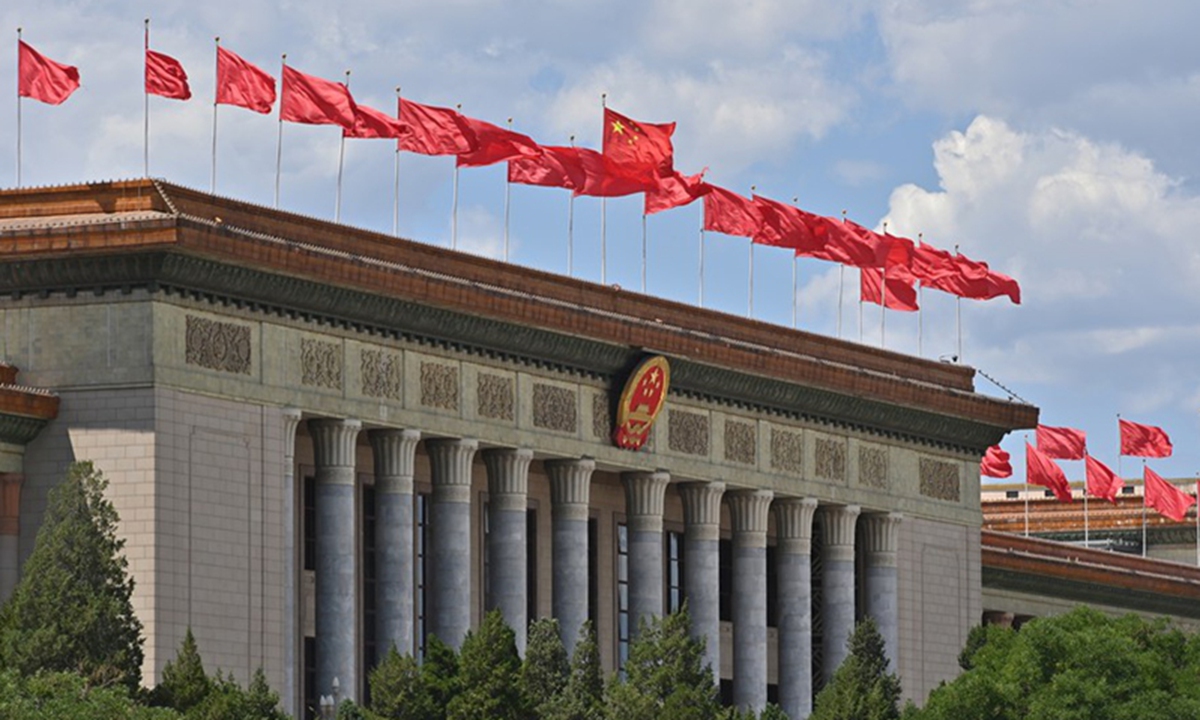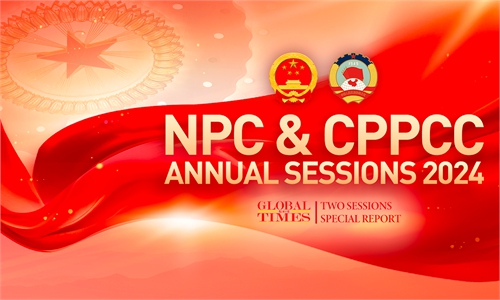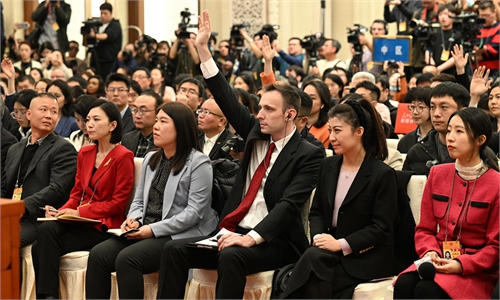ARTS / CULTURE & LEISURE
Work report inspires motivation
CACH ‘medical school,’ ‘hospital’ for relics: expert

Two Sessions Photo:Xinhua
A government work report submitted to the national legislature for deliberation on Tuesday has revealed the main targets for China's development in 2024 in various fields. In terms of culture, the report said that China aims to enrich people's intellectual and cultural lives and further promote cultural inheritance and development through a series of actions. It has received tremendously positive feedback from political advisors in relevant industries.
"The report inspires motivation and confidence, and it is an important tool to help practitioners take an overall approach to understanding current economic and social development," said Chinese People's Political Consultative Conference (CPPCC) National Committee member Wang Huiren, who is also the chief editor of the Baihua Literature and Art Publishing House and member of the Central Committee of the China Association for Promoting Democracy.
The government work report proposes strengthening the systematic protection and rational utilization of cultural relics, which has impressed Chen Xingcan, a member of the CPPCC National Committee and director of the Institute of Archaeology under Chinese Academy of Social Sciences.
A new building at the Yinxu Museum recently opened in Central China's Henan Province. As the director of the Yinxu Museum, Chen shared his opinion with the Global Times that the construction and opening of heritage museums and archaeological site parks count as rational utilization of relics, but he noted that there is more to it than just moving archaeological artifacts to museums for display.
"While exhibiting and utilizing them, we should also instill public awareness about cultural relic protection. We have a large number of relics in the wild, and only a few are in museums. How to protect and pass them down through the generations is the essence of strengthening the systematic protection of cultural relics," he said, adding that archaeological excavation is also part of cultural relic protection. "Only by carrying out excavation and research well can we better protect and inherit them."
"Many of the tasks mentioned in the work report are closely related to us," CPPCC National Committee member Li Liusan, director of the Chinese Academy of Cultural Heritage (CACH) and executive secretary-general of the Alliance for Cultural Heritage in Asia, told the Global Times.
The report pointed out that China will boost people-to-people exchanges with other countries and strengthen its capacity for international communication. Li noted that for archaeological professionals, cross-border collaboration on researches and projects will be able to achieve these goals.
Currently, CACH is undertaking restoration projects at the Nepalese Palace and the Angkor Palace Site in Cambodia, continuing to tell the story of China overseas joint archaeological cooperation, Li disclosed.
Another highlight of the report concerning archaeology was the launch of the fourth national survey of cultural relics. A national catalog of and a large database for immovable cultural relic resources will be established, and a dynamic management mechanism for relic resources and assets will be built. The survey also aims to enhance identification and announcement of immovable cultural relics, provide better protection and management of them, and help cultivate related professionals. China carried out national cultural heritage surveys in 1956, 1981 and 2007.
On this basis, we will promote the systematic protection and proper use of cultural artifacts as well as protection and preservation of intangible cultural heritage, the report stressed.
Li noted that the CACH has formulated detailed plans regarding the fourth national survey, and participated in professional guidance and consultation work.
Systematic protection of cultural relics involves strengthening research and management across the entire chain of operations, such as mapping, surveying, material composition analysis, experimental research, restoration implementation, and post-restoration monitoring and evaluation, Li further explained.
The expert described the institute as both a "cultural relic medical school" and a "cultural relic hospital," as it focuses not only on fundamental conceptual research but also on the practice of cultural relic restoration. It combines traditional Chinese and Western approaches, providing comprehensive "treatment" to contribute to the protection of cultural relics, the material evidence of Chinese civilization.
In addition to guidance regarding the protection of cultural relics, the report stated that the government will implement cultural projects to benefit the public in creative ways and improve services at free public cultural facilities. More efforts will be made to develop the cultural sector.




